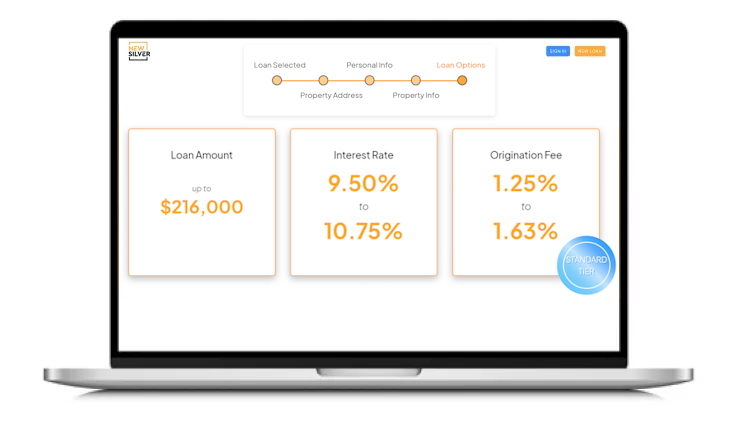The Short Answer
Automated Valuation Models (AVMs) are data-driven tools that estimate property values using statistical modeling and real estate databases. While they offer speed, cost-effectiveness, and objectivity, their accuracy depends on the quality of the data they process and may struggle with unique properties or those requiring detailed physical inspections.
Unlike traditional home appraisals, which involve in-person evaluations by professionals, AVMs rely on algorithms and online data, making them faster and more convenient but less nuanced. AVMs are commonly used by real estate agents, lenders, and investors for quick assessments and preliminary decisions, while appraisals remain essential for high-stakes transactions requiring precision. Despite limitations, technological advancements are improving AVMs’ reliability, making them an increasingly valuable tool in real estate.
Jump To
What Is An Automated Valuation Model (AVM)?
An Automated Valuation Model (AVM) leverages advanced data analysis and local real estate market information to estimate a property’s value. This approach combines statistical modeling with comprehensive real estate databases to deliver property valuations. However, the accuracy of an AVM depends heavily on the quality and depth of its data. By analyzing and comparing properties within similar price ranges, AVMs provide a data-driven estimate, but their precision is limited to the reliability of the underlying information.
How AVMs Actually Work
Automated Valuation Models (AVMs) use advanced mathematical formulas and technology to estimate a property’s value by analyzing property details alongside a wealth of data on comparable properties. The calculations performed by an AVM are influenced by several key factors, including:
- Sales history of properties in the area
- The year the home was built
- Tax assessor’s valuation
- The property’s features (size in square feet, number of bedrooms/bathrooms etc)
- The sales history of the specific property
By processing this data, AVMs generate an approximate property value that can assist buyers, sellers, and agents in making informed decisions. However, it’s important to note that these values are estimates and should be considered as starting points rather than definitive valuations.

Examples Of How AVMs Are Commonly Used
AVMs serve a variety of purposes in the residential real estate and commercial real estate industry, offering value to professionals across different roles. Here’s a closer look at some of the most common use cases for AVMs:
Example 1. Real Estate Agents
Real estate agents use AVMs to provide clients with quick, data-driven property valuations. These estimates help agents guide sellers in setting competitive listing prices or assist buyers in evaluating whether a property is priced fairly. AVMs also allow agents to conduct market analyses efficiently, saving time while enhancing their expertise in the local real estate market.
Example 2. Lenders
Lenders rely on AVMs to streamline the loan approval process. By using these models to estimate a property’s value, lenders can quickly assess the collateral backing a mortgage or loan application. AVMs are particularly useful for pre-approval processes or when a traditional appraisal isn’t immediately feasible, offering a faster alternative for decision-making.
Example 3. Real Estate Investors
Investors use AVMs to evaluate potential investment opportunities. These models provide a snapshot of a property’s value, helping investors decide whether a deal aligns with their financial goals. Whether flipping houses, purchasing rental properties, or analyzing market trends, AVMs empower investors with quick insights to make informed decisions.
By catering to these key players in the residential real estate industry, AVMs have become indispensable tools, enhancing efficiency, accuracy, and decision-making across the board.
How Accurate Are AVMs?
While Automated Valuation Models (AVMs) offer valuable insights, they come with limitations that can affect their accuracy. For instance, if there aren’t enough comparable properties in the area—such as recently sold homes of similar size, style, or features—the AVM may struggle to produce a reliable estimate due to this lack of comparative market analysis. Unique properties, like a waterfront mansion in a desert state or a custom-built home with unconventional features, can also challenge the model’s ability to generate an accurate valuation.
AVMs rely on data patterns and trends with a comparative market analysis, and when the data is incomplete, outdated, or inconsistent, the accuracy of the valuation diminishes. External factors like neighborhood changes, local market fluctuations, or renovations that aren’t reflected in public records can further skew results.
That said, real estate technology is advancing rapidly. With the integration of machine learning and artificial intelligence, AVMs are becoming smarter and more sophisticated. These innovations allow models to incorporate a broader range of data, such as market trends, satellite imagery, and even property-specific details from smart home devices. As a result, AVMs are gradually improving in accuracy and are better equipped to handle in depth property valuations.

Advantages of AVMs
Advantage 1: Reliable Starting Point for Real Estate Transactions
AVMs provide an upfront property valuation that serves as a strong foundation for real estate transactions. This can help minimize the chances of a deal falling through due to discrepancies in appraised values, as buyers, sellers, and agents have access to a solid estimate early in the process. By offering a baseline valuation, AVMs create a smoother, more predictable transaction experience.
Advantage 2: Unmatched Convenience
One of the key benefits of AVMs is their speed and accessibility. They calculate property values in seconds, eliminating the need for time-consuming visits or traditional appraisals. This makes AVMs particularly useful for tasks like evaluating entire property portfolios. Once an AVM system is set up, it can be used repeatedly at minimal cost, providing users with a highly efficient solution. With many free or low-cost AVM tools available, even smaller-scale investors or homeowners can take advantage of their convenience without a significant financial commitment.
Advantage 3: Cost-Effective Property Valuations
Compared to traditional appraisals, which require professional appraisers to do in depth property valuations and can be expensive, AVMs offer a much more affordable alternative. Many platforms provide free valuations or charge a nominal fee, making AVMs an attractive option for those looking to save money. By automating the valuation process, AVMs reduce the need for labor-intensive evaluations, making property value assessments accessible to a wider audience.
Advantage 4: Transparency and Objectivity
AVMs rely on data and algorithms, removing subjective bias from the valuation process. Unlike traditional appraisals, which may be influenced by human judgment, AVMs provide a transparent, data-driven estimate. This objectivity can help build trust among buyers, sellers, and other stakeholders in a transaction.
Advantage 5: Objectivity
Since AVMs rely entirely on data and algorithms, they eliminate the potential for human bias in the valuation process. This objectivity enhances their reliability and builds trust among buyers, sellers, and other stakeholders involved in a real estate transaction. By providing impartial, data-driven estimates, AVMs serve as a dependable tool for making informed decisions.

Disadvantages of AVMs
Disadvantage 1: Accuracy Depends on Data Quality
AVMs are only as reliable as the data they use. For accurate valuations, they require large, high-quality datasets. Incomplete, outdated, or inaccurate data can significantly impact the accuracy of the valuation. The success of an AVM model hinges on the availability of detailed, up-to-date, and comprehensive information. Without it, the results may fail to reflect the true value of a property.
Disadvantage 2: Physical Condition of the Property Isn’t Considered
One major limitation of AVMs is their inability to account for the physical condition of a property. Since AVMs rely on data rather than in-person inspections, they cannot evaluate factors such as curb appeal, recent renovations, or maintenance issues. This can result in discrepancies between the AVM’s estimate and the actual market value. While some processes may involve an exterior inspection to ensure basic physical condition, it is not a standard feature of most AVMs.
Disadvantage 3: Challenges with Unique or Uncommon Properties
AVMs often struggle to accurately value unique or unconventional properties. These include custom-built homes, properties with rare features, or those located in areas with few comparable property sales. Since AVMs rely heavily on comparable property sales data, they are less effective when no closely comparable properties are available. This can lead to valuations that do not fully account for the unique characteristics of the property.

AVMs vs. Home Appraisals: What’s the Difference?
Both AVMs and home appraisals aim to estimate a property’s value, they differ significantly in their processes, methodologies, and applications. Here are the key differences:
Key Difference 1: Subjectivity vs. Objectivity
A major difference lies in how valuations are derived. Home appraisals are conducted by professionals who visit the property, evaluate its condition, and use their judgment to determine its value. While this approach allows for a nuanced evaluation, it also introduces the possibility of human bias or error.
AVMs, on the other hand, rely purely on data and algorithms, offering an objective valuation. This removes any potential for personal bias, making AVMs consistent and transparent, though sometimes less nuanced in unique situations.
Key Difference 2: Costs and Ease of Use
AVMs are highly cost-effective, often free or available for a minimal fee. They require no scheduling or on-site visits—users simply input an address online to receive a quick valuation in a matter of minutes. This convenience makes AVMs accessible to anyone, including homeowners, investors, and lenders.
In contrast, home appraisals are more expensive, often costing hundreds of dollars. They involve detailed, manual inspections and evaluations, requiring a licensed appraiser to visit the property and spend hours assessing its value. These can take a week to complete.
Key Difference 3: In-Person vs. Remote Evaluation
Home appraisals are conducted on-site by a licensed professional who inspects the property’s physical condition, features, and any recent renovations. This in-person evaluation allows for a detailed and accurate assessment of factors that may not be visible in public records.
AVMs, however, operate entirely online, using existing databases and algorithms to calculate property value estimates. This process takes only minutes but cannot account for physical details like a well-maintained interior or curb appeal.
Key Difference 4: Level of Detail and Customization
Home appraisals offer a comprehensive, customized evaluation of a property, including factors like structural integrity, landscaping, and unique features. This makes them ideal for properties with special characteristics or for use in transactions requiring a high level of precision, such as mortgage lending.
AVMs, while fast and efficient, are more generalized. They rely on data averages and comparable sales, which may not account for the specific features or unique qualities of a property.
Key Difference 5: Use Cases
Home appraisals are typically required in situations where accuracy is critical, such as securing a mortgage, settling an estate, or completing a real estate transaction. They provide a detailed, formal valuation that meets legal and financial standards.
AVMs are more commonly used for preliminary assessments, quick estimates, or situations where speed and convenience outweigh the need for precision, such as portfolio evaluations or early-stage decision-making in real estate transactions.
AVM vs Home Appraisal
| AVM | Home Appraisal |
|---|---|
| Objective: Use data and algorithms | Subjective: Conducted by a professional |
| Minimal cost or free | Hundreds of dollars |
| Online | On-site |
| Generalized estimate | Comprehensive evaluation |
| Used for preliminary assessments | Used for formal purposes |
Frequently Asked Questions (FAQ)
When a listing indicates “Allow AVM,” it means the seller has granted permission for their property’s information to be used by an Automated Valuation Model (AVM). This allows the AVM to generate an estimated value for the property, which can then be accessed by potential buyers through online listing platforms or virtual office websites. It provides an accessible way for buyers to gain a quick understanding of the property’s potential value.
The cost of an AVM appraisal varies depending on factors such as the type of AVM used, the data required, and the geographic location. However, AVMs are generally very affordable, often free or available for a nominal fee, making them a cost-effective option compared to traditional appraisals.
An AVM Confidence Score indicates the reliability of an AVM’s property value estimates, often represented as a star rating, with five stars being the highest confidence level and zero stars the lowest. This score is calculated using the Forecast Standard Deviation (FSD), a statistical measure that predicts the potential error in the valuation. A lower FSD signifies higher confidence in the AVM’s accuracy, helping users understand how close the valuation might be to the actual market value. The confidence score also provides an estimated value range, giving buyers and sellers additional context for decision-making.




